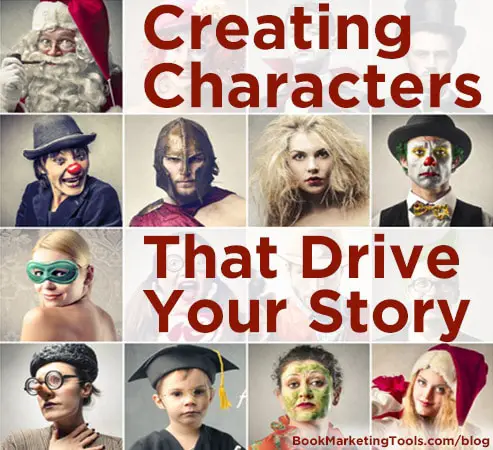This is a guest post from Kathy Campshure. Marketing a book is extremely important, but having a great product to market is just as important! If you have weak characters that are lame, readers will tell you so in their reviews, which can hurt sales. Kathy shares some tips and a tool to help you to create awesome characters, characters that your future readers are going to fall in love with, and want to tell their friends about!
Action, adventure, romance, mystery, fantasy… the story you long to write can belong to any one (or more) of those categories. But no matter what genre you choose to write, one challenge will be the same. It will take strong characters to drive your story and bring it to life.
Long before you introduce any character into a story (and ultimately to your readers), you have to do your homework. This means that you should know that character inside and out. There are many online tools that can help you to choose all of the personality traits and background data that will give your characters the necessary details. One such source can be found at: EpiGuide. It consists of a multi-page form where you can enter every detail imaginable about every character you want to create. Yes, it is time-consuming and it takes work, but well-rounded and believable characters aren’t created in a matter of minutes. They need to be given a history as well as a current identity, and that takes time.
When you are considering what personality traits your characters should possess, be careful. Often, beginning writers are lulled into thinking that their ‘good’ guys need to have good characteristics and their ‘bad’ guys simply have to be bad. They rush to make their heroes strong, compassionate, honest, and loyal—all of the traits that we admire, while their villains are the exact opposite—evil, conniving, dishonest, ruthless, etc. Ultimately, though, this doesn’t work very well.
Why? Because writing should mimic life—and few things in life are that ‘cut and dried’. Think about the people you know; few people are all good or all bad. Typically, we are a mixture of these two extremes. What does this mean to you as an author? It means that the characters you create also have to be a mixture; your protagonist, in essence, has to have flaws, and your antagonist should also have some positive (if not endearing) qualities.
Think about it. The best fiction is driven by conflict; the stronger the conflict, the greater the tension and the more powerful a story can become. Avoid ‘spoon-feeding’ your readers a hero that they want to embrace and a villain that they want to murder. Instead, give them a protagonist with flaws that the reader is willing to overlook, and an antagonist that the reader can’t help but like on one or more levels. For example, give your hero some deep, dark secret that forces him/her to distrust and be openly rude to all authority figures—even those who are trying to help. Or create a villain that keeps a local animal shelter open through anonymous donations because of the love he/she felt for a dog they had as a child. Remember, few people are strictly good or bad, so your characters shouldn’t be, either. Creating complexity in your characters will bring your writing to a new level, and your readers will be hooked and brought along for the ride.
When writing, the devil is always in the details. Creating strong characters is one of the best ways to give your fiction the edge it needs to stand above the crowd.
Kathy Campshure, who also publishes under the pen-name of K.C. Berg, lives in Northeast Wisconsin where she finds inspiration for fantasy novels, motivational stories and stage plays. Her latest novel, a spiritual/romance titled Fallen Angel, is due out in August. Her website can be found at WriteToPlay.com

